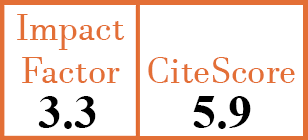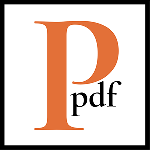Full Papers
Differential expressions of NOD-like receptors and their associations with inflammatory responses in rheumatoid arthritis
H.W. Kim1, Y.-J. Kwon2, B.W. Park3, J.J. Song4, Y.-B. Park5, M.C. Park6
- Division of Rheumatology, Department of Internal Medicine, Yonsei University College of Medicine, Seoul, South Korea.
- Division of Rheumatology, Department of Internal Medicine, Yonsei University College of Medicine, Seoul, South Korea.
- Chadwick International School, Songdo, Incheon, South Korea.
- Division of Rheumatology, Department of Internal Medicine, Yonsei University College of Medicine, Seoul, South Korea.
- Division of Rheumatology, Department of Internal Medicine, Yonsei University College of Medicine, Seoul, South Korea.
- Division of Rheumatology, Department of Internal Medicine, Yonsei University College of Medicine, Seoul, South Korea. mcpark@yuhs.ac
CER9960
2017 Vol.35, N°4
PI 0630, PF 0637
Full Papers
Free to view
(click on article PDF icon to read the article)
PMID: 28240593 [PubMed]
Received: 23/09/2016
Accepted : 03/01/2017
In Press: 24/02/2017
Published: 13/07/2017
Abstract
OBJECTIVES:
To determine the differential expressions of nucleotide oligomerisation domain (NOD)-like receptors (NLRs) and to investigate their association with inflammatory responses in rheumatoid arthritis (RA) fibroblast-like synoviocytes (FLS).
METHODS:
Gene expression and protein levels of various NLRs, including NOD1, NOD2, NLRP1, NLRP3, NLRP12, NLRX1, and NLRC3, were determined in FLS and synovial tissues from patients with RA and patients with osteoarthritis (OA) using quantitative real-time PCR and immunohistochemistry. After transfection of NOD2 RNAi plasmids or a pcDNA3.1-NLRX1 vector, gene expression levels of pro-inflammatory cytokines in RA FLS and the protein levels of these cytokines in culture supernatants were determined using quantitative real-time PCR and enzyme-linked immunosorbent assays. The effects of NLR gene regulation on NF-κB and caspase-1 were evaluated using Western blot analysis.
RESULTS:
Gene expression levels of NOD1, NLRP1, NLRP3, NLRP12, and NLRC3 were not different between RA and OA samples. NOD2 gene expression and protein levels were significantly increased in RA samples, whereas the levels of NLRX1 were significantly decreased. Downregulation of NOD2 gene expression by transfection with NOD2 RNAi plasmid significantly reduced pro-inflammatory cytokine levels in RA FLS, while transfection with adenoviral vectors encoding NLRX1 had no effect on pro-inflammatory cytokine levels. Downregulation of NOD2 gene expression significantly decreased NF-κB, TRAF6, and IKK levels, but not caspase-1 levels, in RA FLS.
CONCLUSIONS:
NOD2 is upregulated in RA FLS; moreover, downregulation of NOD2 gene expression reduces pro-inflammatory cytokine and NF-κB levels in RA FLS. These findings provide evidence that NOD2 exerts pro-inflammatory effects in RA.


